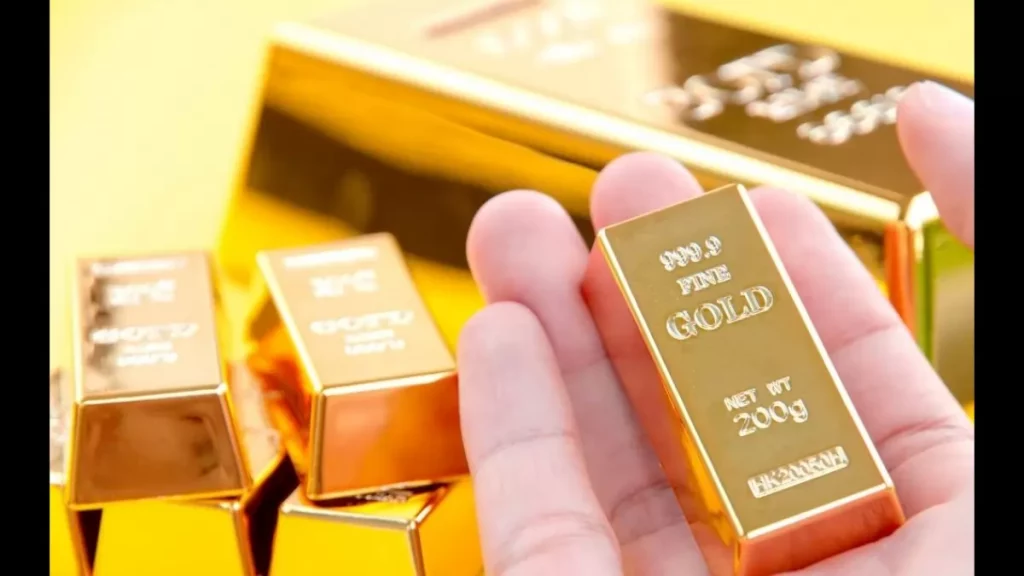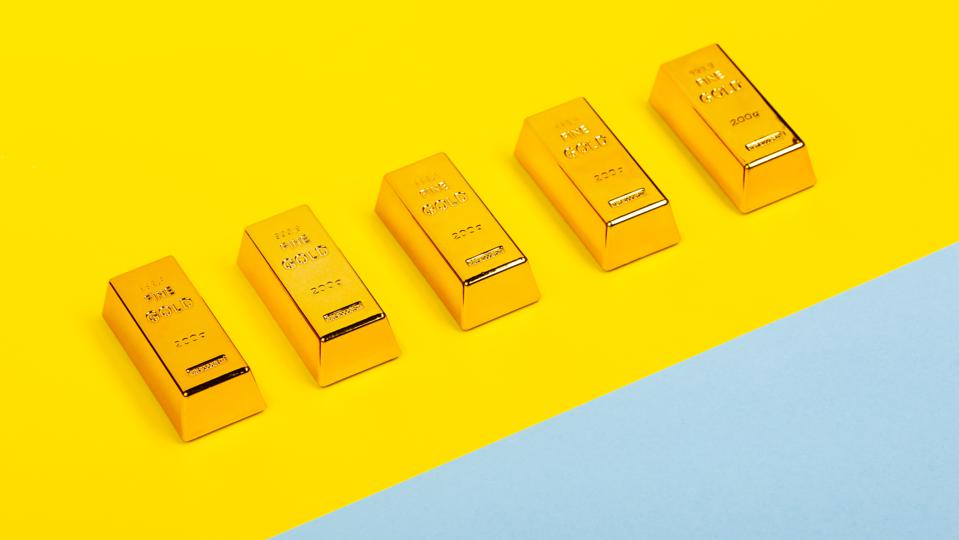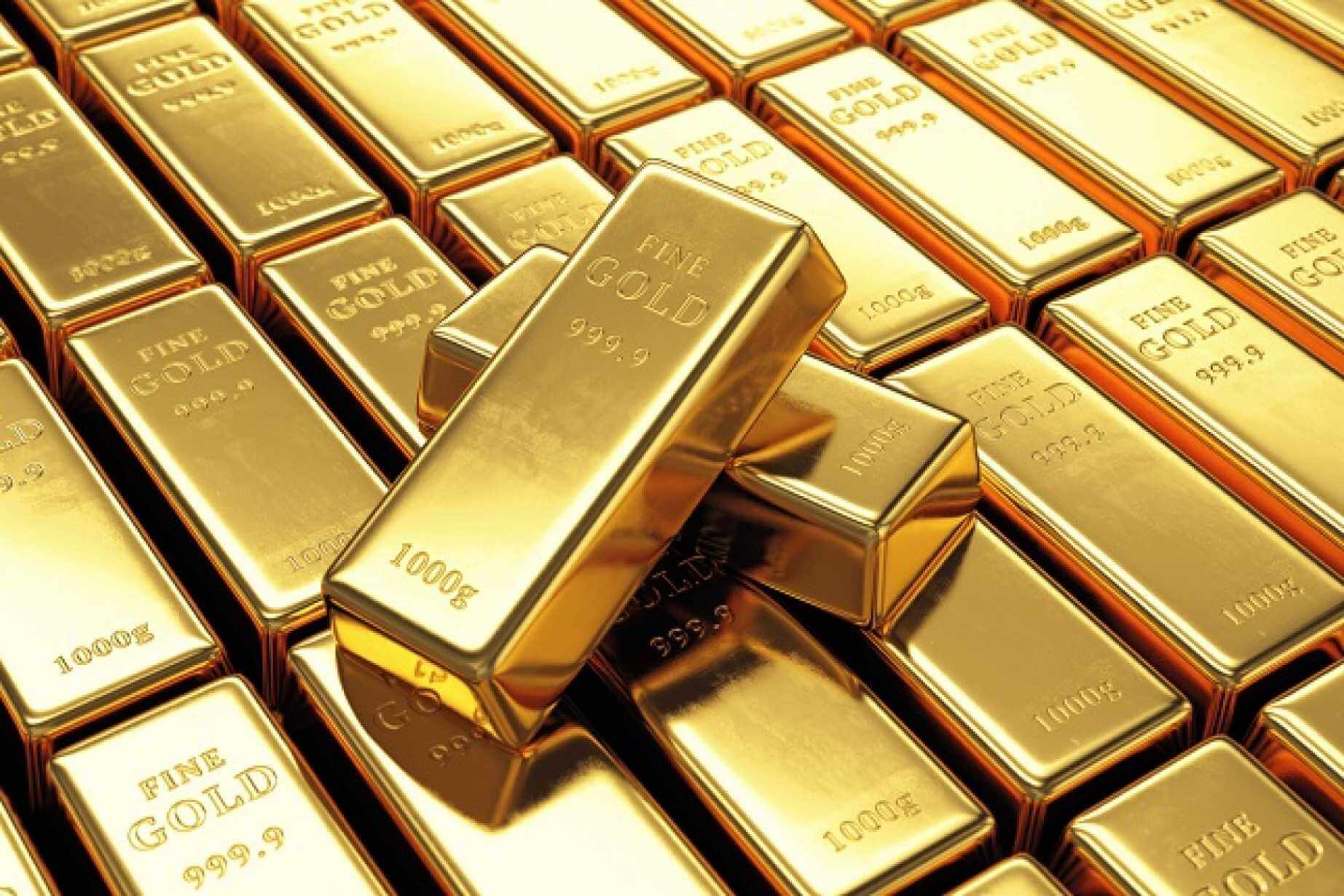A Roth IRA is a type of investment account that allows tax-free growth and withdrawals in retirement. Unlike traditional IRAs, contributions to a Roth IRA are made using after-tax dollars and are not eligible for a tax deduction. However, the earnings and withdrawals made from a Roth IRA are tax-free, as long as you meet certain conditions. This type of IRA is a popular choice for investors who want to diversify their retirement accounts or who expect to be in a higher tax bracket during retirement. In this article, we will explore how a Roth IRA works and its benefits and drawbacks as an investment option.
Types of Gold Investment for Your Gold Roth IRA
When it comes to investing in a Gold Roth IRA, there are various types of gold investments to choose from. From bullion coins and bars to ETFs and mining stocks, investors have a wide range of options to choose from. In this article, we’ll take a closer look at the types of gold investments that can be included in a Gold Roth IRA to help investors make informed decisions and diversify their retirement portfolio with tangible assets.
Bars and Coins
When it comes to investing in a Gold Roth IRA, investors have the option to purchase bars and coins as their physical assets. Bars and coins are both physical forms of gold that are popular choices for many precious metals IRA investors.
Bars, also called bullion, are produced by reputable mints and refineries around the world. They come in various sizes, ranging from 1 gram to 400 ounces. They are uniform in size and shape and are easier to store than coins due to their stackability. Bars are valued based on their weight and purity, making them a popular choice for investors who are primarily interested in the metal’s intrinsic value.
Coins, on the other hand, are produced by government mints and are highly valued for their rarity, historical significance, and numismatic value. They come in various sizes, weights, and designs, and they are often more valuable than their weight in gold.
Investors prefer to hold both bars and coins in their precious metals IRA because they are tangible assets that provide a hedge against inflation and market turmoil. Bars are a great way to add large amounts of gold to a retirement portfolio, while coins provide a numismatic element that may appreciate over time.

Exchange Traded Funds (ETFs)
Exchange Traded Funds (ETFs) are a type of investment fund that is traded on stock exchanges like a stock but behaves like an index fund. One popular way to invest in gold is through gold ETFs, which allow investors to buy shares in a fund that tracks the value of gold.
Investing in a gold ETF means buying shares in a fund that trades on major stock exchanges and tracks the market price of gold. This option provides a convenient and practical way for investors who seek to include gold in their retirement accounts. Instead of buying physical gold, investors can purchase these shares and benefit from gold’s value as a tangible asset.
One advantage of investing in gold ETFs is that it eliminates the logistical issues that come with storing physical gold. As a bonus, gold ETFs also offer the flexibility to trade on stock exchanges, meaning that investors can buy or sell shares from anywhere at any time.
Mining Stocks
Investors looking to diversify their retirement portfolio with physical gold or precious metals have several options, including gold Roth IRAs. A gold Roth IRA allows people to invest in gold and other precious metals while also benefiting from the tax advantages of a Roth IRA setup.
One option for investing in a Gold Roth Ira is through mining stocks. This type of investment involves buying stocks in companies that mine and produce gold. Mining stocks can offer investors potentially high profits when the price of gold rises, as gold mining companies are likely to see increased profits when the price of gold is high.
However, investors must also be aware of the significant risks associated with mining stocks. Mining companies face various issues such as problems with production, management, and regulatory issues that could negatively impact their share prices.
Therefore, investors must do their due diligence and research the companies thoroughly before investing in mining stocks. Factors to consider include the company’s financial performance, management team, production and reserve figures, and regulatory compliance.
Investors looking to consider mining stocks in their gold Roth IRA portfolio should research and evaluate the top gold mining stocks to invest in. Examples of top gold mining companies include Newmont, Barrick Gold, AngloGold Ashanti, Gold Fields, and Kinross, among others. These companies have a track record of producing gold and maintaining a stable financial position.
Mutual Funds
If you’re looking to diversify your retirement portfolio with gold, you may be wondering how to invest in gold within a Roth IRA. While direct gold investment in a Roth IRA is generally prohibited by the IRS, there are still options available to you, such as investing in gold mutual funds.
Mutual funds are a popular investment option for Roth IRA investors because they allow you to invest in a diversified portfolio of assets, including gold. Gold mutual funds typically hold stocks of gold mining companies, gold processing firms, and even gold ETFs. They may also invest in other precious metals, offering you exposure to a wider range of assets and diversifying your portfolio.
Here’s how gold mutual funds work:
1. Investing in a mutual fund: To invest in a mutual fund, you’ll need to open a Roth IRA account with a financial advisor or brokerage firm and choose a mutual fund that meets your investment goals and risk tolerance.
2. Investing in gold mutual funds: Once you’ve chosen a mutual fund, you can invest in it to gain exposure to gold through the stocks it holds. The mutual fund’s manager is responsible for selecting the portfolio of stocks that the fund invests in. By buying shares in the mutual fund, you gain exposure to a versification of companies that produce, process, or distribute gold.
3. Managing risk: Like all investments, investing in gold mutual funds comes with risks. The value of the mutual fund’s shares can fluctuate depending on the performance of the gold market and the management of the companies the mutual fund invests. It’s important to talk to your financial advisor and review the mutual fund’s investment prospectus before investing, and to monitor your investment’s performance regularly.
Investing in gold mutual funds within a Roth IRA allows you to enjoy the tax benefits of a Roth IRA while also diversifying your portfolio with gold and other precious metals. Speak to a reputable financial advisor or brokerage firm to learn more about investing in mutual funds to balance risk and ensure that you’re making informed investment decisions.
Physical Possession of Precious Metals
A Precious Metals IRA allows individuals to invest in tangible assets like gold, silver, platinum, and palladium, which can provide a hedge against inflation. In a Precious Metals IRA, investors can choose between holding different types of physical precious metals, including bullion, coins, and bars.
Bullion refers to precious metals that are refined and produced in bulk, typically in the form of bars or ingots and are traded based on their weight and purity. Coins, on the other hand, are collector items struck by a government mint and are legal tender in their country of origin. Bars are similar to bullion but come in smaller sizes and are typically produced by private mints.
Investors can benefit from holding any of these physical precious metals as they provide a level of protection against economic uncertainty and provide an alternative asset to diversify their investment portfolio. However, there are also disadvantages to holding physical precious metals. For example, compared to stocks or mutual funds, they can be illiquid and can be subject to storage and insurance costs.
To ensure the safety and integrity of these assets, it is important to store them in an IRS-approved depository. These depositories are highly secure and strictly regulated to provide the necessary level of safety for these valuable assets. Along with safety, storage fees must also be considered. Storage fees vary depending on the amount and type of precious metals being held in the depository and can range from a few hundred dollars to a few thousand dollars a year.
Numerous reputable custodians or administrators offer secure storage options for precious metals. Some of the most popular include Delaware Depository, Brinks Global Services, and IDS of Delaware.
Accurate record-keeping is also essential to ensure that the value of the investment is tracked correctly. Gold, for example, can experience fluctuations in value because of numerous factors, such as changes in supply and demand or market volatility. By keeping accurate records and tracking value changes, investors can make informed decisions and adjust their investment strategies accordingly.
Benefits of Including Gold in a Roth IRA Investment Strategy
Investing in gold through a Roth IRA can be a smart financial decision for individuals looking to diversify their retirement portfolio. With the potential to hedge against inflation and economic uncertainty, precious metals such as gold can provide a stable and tangible asset class within an investment portfolio. In this section, we will discuss the advantages of investing in gold through a Roth IRA, including tax benefits and the ability to hold physical gold and gold-based investments in a self-directed individual retirement account.

Tax Benefits of Investing With Gold Roth IRAs
Investing in a gold Roth IRA provides investors with several significant tax benefits. A Roth IRA is a special type of retirement account that enables investors to make tax-free withdrawals during their retirement years. With a gold Roth IRA, investors are investing in physical gold and other precious metals. In this article, we will discuss how Gold Roth IRAs work, why investors should consider them, and the tax benefits they offer.
One of the most significant benefits of investing in a gold Roth IRA is its tax-advantaged structure. Contributions made to the account are made with after-tax dollars, meaning they have already been taxed. However, all future growth and proceeds from the account are tax-free. This is a significant advantage over traditional IRA accounts, where contributions are made with pre-tax dollars, but distributions are taxed as income.
Investors can also reduce their taxable income by investing in a gold Roth IRA. Contributions can be made up to a certain limit each year, which reduces the amount of money that is subject to current taxation. For example, if an investor contributes $6,000 to their gold Roth IRA, that amount is deducted from their taxable income. This can help lower an investor’s overall tax burden and increase their total retirement savings.
Investors who hold their assets within a gold Roth IRA can also enjoy non-taxable profits. Any gains made on investments held in the account are not subject to tax as long as they remain in the account. This is particularly useful for investors who have invested in physical assets like gold, which tend to appreciate over time. By not having to pay taxes on the profits, investors can maximize their retirement savings.
Another benefit of investing in a gold Roth IRA is the power of compound interest. The longer an investor leaves their money in the account, the more time it has to grow. Moreover, the longer the investment horizon, the more the returns will compound, providing long-term benefits to investors.
Diversifying Your Retirement Portfolio with Precious Metals
As you plan for your retirement, diversification should be a critical component of your investment strategy. Diversifying your portfolio can help reduce overall risk, potentially increase returns, and safeguard against market volatility. One way to diversify your retirement portfolio is by adding precious metals, such as gold, silver, platinum, and palladium, to your Gold Roth IRA.
Precious metals have unique qualities that make them a valuable asset class for diversification. In times of economic uncertainty, precious metals tend to hold their value and can even increase in price. The stock market and other traditional investments may experience volatility during market fluctuations, but precious metals typically maintain their worth and provide a hedge against inflation. Additionally, precious metals, particularly gold, have a track record of performing well during times of market turbulence and can offer stability to your investment portfolio.
The IRS allows for certain types of precious metals in a Gold Roth IRA, including gold, silver, platinum, and palladium. However, to meet IRS standards, these metals must meet specific purity and production requirements. For gold, it must be at least 99.5% pure and come in the form of coins or bars. For silver, platinum, and palladium, they must be at least 99.9% pure. As with any investment, it’s crucial to consult with a financial advisor to make informed decisions about your precious metals portfolio.
By adding precious metals to your Gold Roth IRA, you may be able to reduce the risk of your investment portfolio while potentially increasing returns. With the right mix of traditional investments, such as mutual funds or exchange-traded funds, and precious metals, you can create a diversified portfolio that will help secure your financial future. Don’t forget to consider the costs associated with storing and purchasing precious metals, such as storage fees and setup fees. With a reputable custodian or self-directed IRA custodian, you can rest easy knowing your precious metals are being securely stored in an IRS-approved depository.
Hedge Against Inflation
Inflation is an ever-present economic factor that can erode the value of cash and traditional investment assets over time. As a result, investors are always on the lookout for ways to hedge their assets against inflation. One effective strategy that has proven to be successful over many decades is investing in gold, particularly through a gold Roth IRA.
Gold has always been considered a stable hedge against inflation, as its prices have historically remained comparatively steady. By investing in gold, investors can protect their wealth from the harmful effects of fluctuating inflation rates. This makes gold a haven for investors looking to safeguard their investments against inflation.
Investing in gold through a gold Roth IRA provides added benefits to investors as it allows them to hold different types of gold investments that can be beneficial for their portfolio. These include physical gold, such as bullion bars and coins, as well as exchange-traded funds (ETFs), mining stocks, and mutual funds. These varied gold investment options provide investors with a wide range of choices to help them diversify their portfolios.
In addition to being a reliable investment against inflation, a gold Roth IRA also offers investors tax benefits. A gold Roth IRA is composed of after-tax dollars, meaning that investors will not have to pay taxes on their withdrawals during retirement. Furthermore, the investment growth within the account is tax-free, giving investors an additional tax benefit.
Conclusion
In conclusion, diversification is an essential component of any successful retirement portfolio, and including gold investments in a Roth IRA can provide valuable benefits. The range of available gold investments for a Gold Roth IRA allows investors to tailor their portfolios to their individual goals and risk preferences, from physical gold assets such as bars and coins to ETFs, mining stocks, and mutual funds.
Diversifying your retirement portfolio with gold investments in a Roth IRA can offer tax benefits, protection against inflation, and a range of investment options to suit individual goals and preferences. By following these steps and seeking guidance from a reputable custodian or financial advisor, investors can make informed decisions and enhance their retirement portfolios with the addition of tangible assets and alternative investments like gold.

